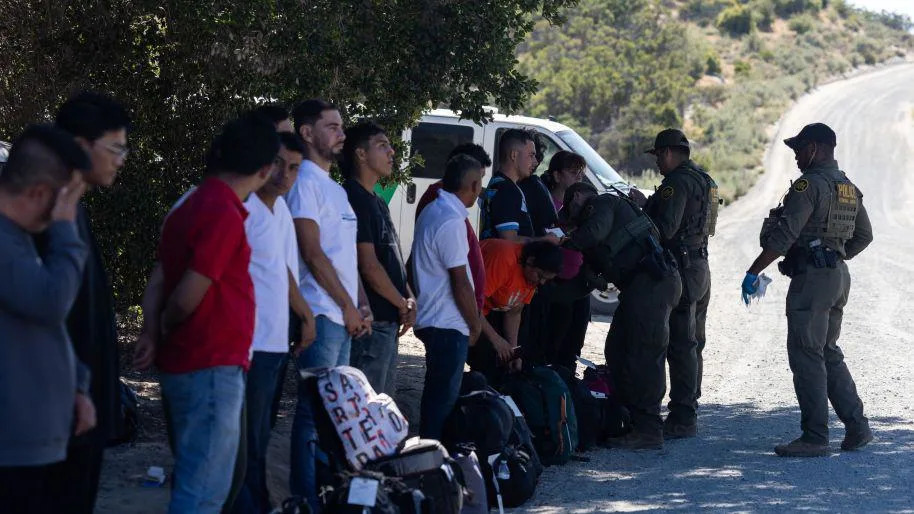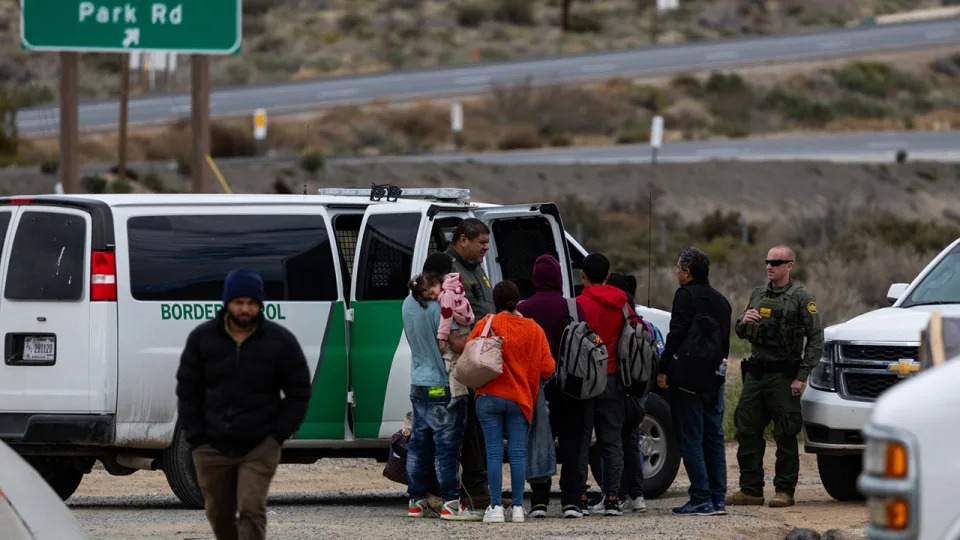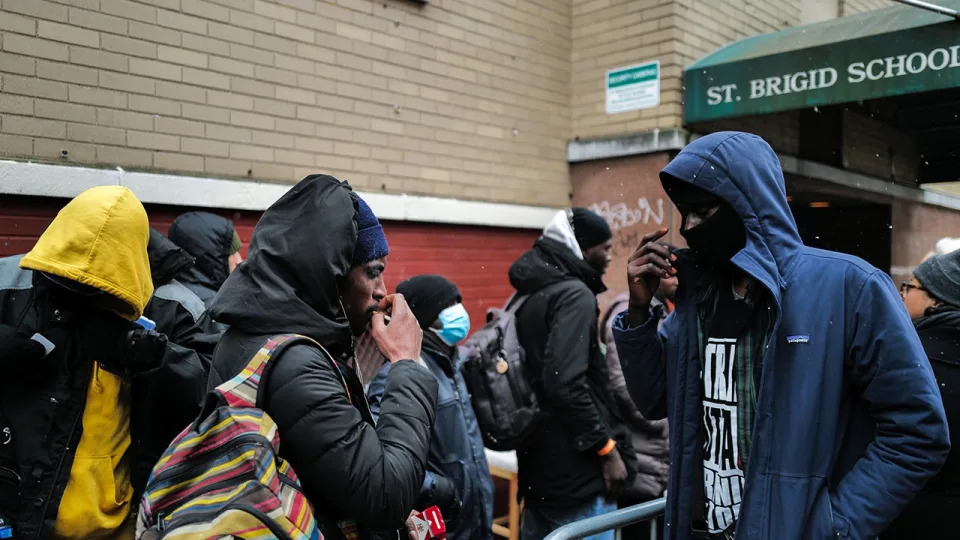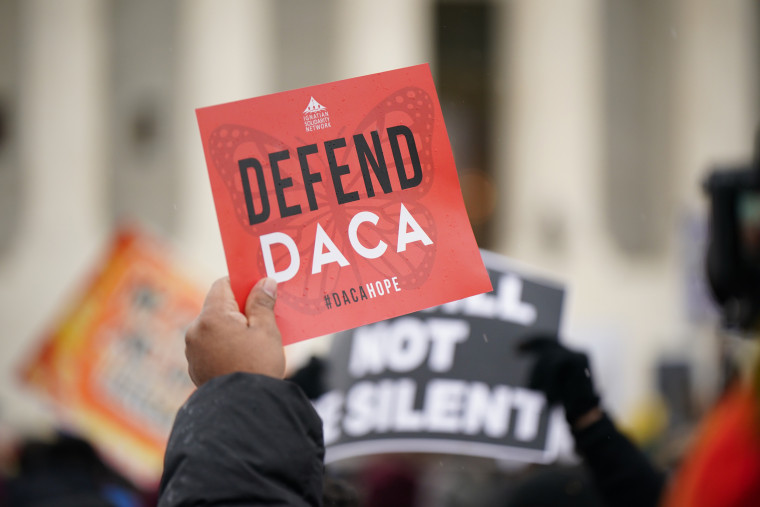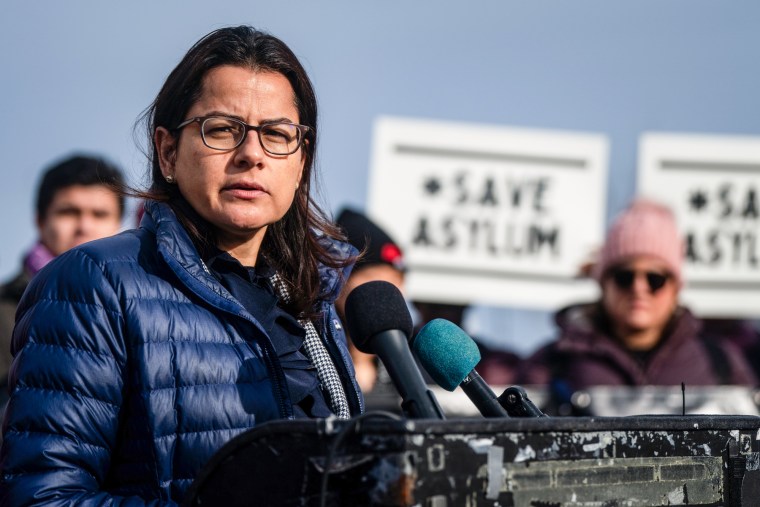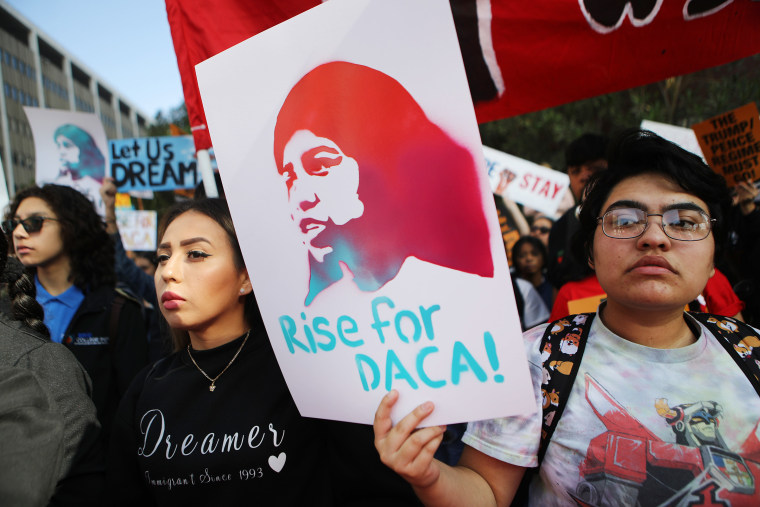The Myth of the "Poll-Driven" Democrat Is Cover for Conservative Policy Preferences
Selective “popularism” is being used by the Democratic Party establishment to pursue reactionary ideological goals.
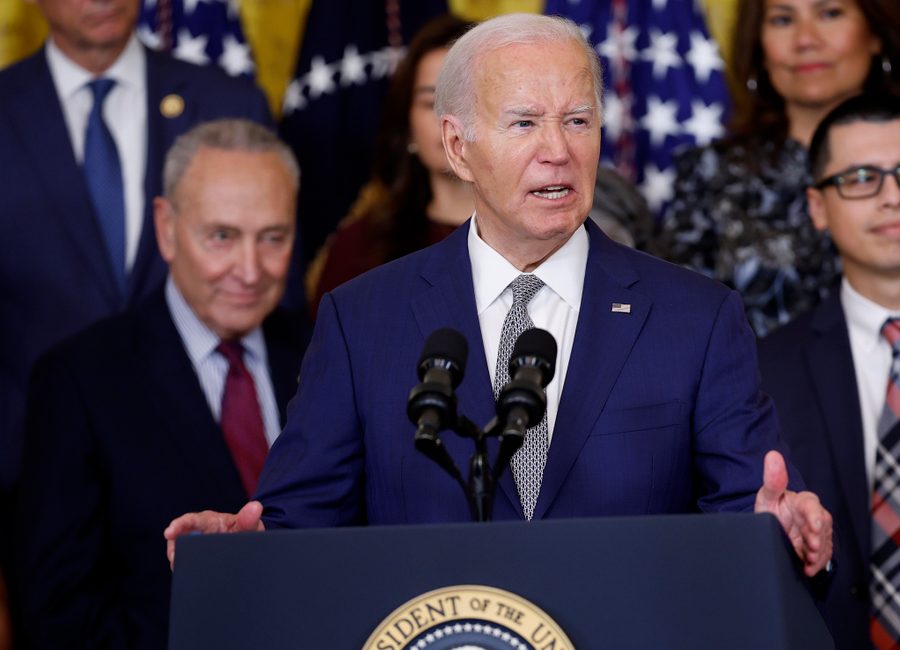
Apopular misconception has taken hold, even among many on the Left, that Democrats’ policy preferences are entirely driven by polling, by chasing what is popular at the moment. The general argument goes like this: because the modern Democratic Party is primarily run by lawyers, corporate managers and marketing types who are largely devoid of any long-term vision, ideological agenda or commitment to activists or movements for social change, party elected officials and their advisers simply put their fingers to the wind and chase what they think the public wants. They run from poll-tested idea to poll-tested idea in hopes they can marshal more than 50% of available votes.
While there is some truth to this perception, as a catch-all for what motivates Democratic Party priorities, this “driven by polls” narrative often obscures the more cynical aims of establishment Democrats, and how selective their appeal to what’s popular can be.
Recently, this mode of politics — much like the term “neoliberal”—has been reclaimed by corporate apparatchiks within Democratic politics under the label of “Popularism.” The concept, coined by writer Matthew Yglesias and political consultant David Shor, seems simple enough. As Vox’s Kelsey Piper puts it, “People trying to win elections should talk about the political positions they hold that are popular, and not the unpopular ones.”
Well ho hum, sounds like some good country-fried, suspender-slapping political advice. Promote what is popular and downplay or deprioritize that which polls badly. Seems simple enough.
This framing, that Democrats are pursuing this or that policy because it’s What The Public Wants, seeks to remove agency or moral choice from politicians, and launder responsibility for bad policy onto a faceless public. When it comes to explaining the actions of the current president, this approach fundamentally serves as a conversation-stopper: Look, Biden is just doing what voters want. Under this line of reasoning, we can’t really be too upset at any right-wing turns by Democrats because they are simply Responding To The Market.
But a deeper analysis shows this isn’t really true, and is more often than not a sleight of hand — a clever use of rhetoric that seeks to evade deeper ideological conflict in favor of maintaining the status-quo. Those gaining power and money under the banner of liberalism while promoting conservative (often cruel, classist and racist) positions would rather eat glass than have to defend those positions on their merits. Appealing to doing what may be unseemly, but necessary, because it’s What The Public Is Demanding avoids this awkward debate altogether. They’re not moral agents pushing a particular worldview, afterall, but messengers of the people, and one can’t really get mad at the messenger.
Let’s take one recent example. Many Biden defenders insist, or heavily imply, that the president’s right-wing turn on “border security” is motivated by broad public popularity—that they Have No Choice but to adopt a hard right turn because “70% of Americans support” it. But polls also show:
84% of Americans support adding dental, vision and hearing coverage to Medicare
74% of American voters say they still believe that “increasing funding for child care and early childhood education programs is an important priority”
72% of Americans want to expand Social Security
71% of Americans support government funded universal pre-K.
69% of Americans support Medicare for All
67% of Americans support a permanent ceasefire in Gaza
66% of Americans support 2 years of government-funded, free college.
These are super-majority popular policies, so why isn’t Biden running on any of them in 2024?
It’s true that Biden does have some popular populist policies: raising taxes on the wealthy and supporting more pro-union legislation, for example. But these policies are not central to his current campaign messaging – – and they certainly have not been given nearly as much emphasis as Biden’s recent so-called “border crackdown.” And when it comes to Gaza, Biden’s recent calls for a ceasefire amount to simply rebranding his previous position of advocating a temporary pause in fighting for hostage exchanges, not an actual end to the war.
The campaign, instead, has downplayed economic populism and, according to their own strategists, decided to focus on more abstract “defending democracy” rhetoric and the theme of Donald Trump’s corruption. Which is all fine and good, and certainly merits mention. But if Biden, and the Democrats more broadly, are motivated by focusing on popular positions — as the defenders of their cruel border policies insist — then why isn’t the president running on policies like adding dental, vision and hearing coverage to Medicare? Expanding Social Security? Increased funding for child care and early childhood education programs? Government-funded universal pre-K? Free college? Medicare for All?
Some of these policies the White House at least nominally supported back in 2021 — like expanding Medicare and free college — but Biden was stymied by conservative Democrats and Republicans who blocked his Build Back Better bill. But why wouldn’t Biden say that he’s putting these policies on the front burner for his next term? Where is the Democrats’ own Project 2025 (the GOP’s far right playbook for a second Trump administration)? Why not put forward a bold wish list of popular progressive policy that will motivate the base and provide a grand vision for a more equitable future?
If Democrats really did things because they were popular and helped them win elections, then they would seemingly embrace such policies rather than running on cruel, racist policies like cutting down on asylum requests by migrants.
Selective Popularism isn’t just a mode of campaigning, it’s also a mode of media coverage — a form of conservative ideological reproduction under the guise of speaking on behalf of the Average Voter. The New York Times has mastered this particularly greasy mode of reporting, especially when it contains a racial angle, selectively highlighting what Black voters are demanding of Democrats — but only when it happens to overlap with what their wealthy, largely white readership and leadership want.
In 2021 and 2022, in the wake of racial justice uprisings, the New York Times published several reports on how Black voters were demanding more policing in their neighborhoods and Democrats were responding organically to this demand in the face of pressure to defund and reform police departments coming from (largely white, it was implied) Soros-funded nonprofit types and grassroots activists. The slippery, push-poll nature of this premise notwithstanding, what is noteworthy is that, even if readers uncritically accepted the premise that, in general, Black voters demand more cops and longer prison sentences in response to rising crime rates, this stands as a very rare instance of the New York Times repeatedly covering and centering the preferences of Black voters.
Black voters also tell pollster after pollster that they — far more than white voters—want more unionization, a higher minimum wage, reparations, free healthcare, free college, affordable housing and more money for schools. But, mysteriously, the New York Times did not make any of these demands the subject of numerous articles employed to pressure Democrats on policy and rhetoric. Why not? If the New York Times and the Democratic Party are simply compelled to respond to Black voter demands, why do neither entities seem to care, in any sustained or central way, about any of these left populist economic demands from Black voters?
This is how the “Popularism” scam works: When over 50% of the public, or a subset of the public, conforms to your ideological preferences, you highlight, focus on, and center this demand, painting it as organic, and laundering your ideological preferences through this faceless public. When the public, or a subset of the public, broadly supports that which is contrary to your conservative agenda — unionization, better wages, free college and free healthcare — you simply… ignore them.
The Popularism tool can be wielded whenever it suits a conservative agenda and pleases wealthy donors, but never beyond this utility. It’s a selective bludgeon. Similar to how Defending Human Rights or Fighting Corruption is utilized to justify militaristic U.S. foreign policy, Popularism is something that can be seen as good in the abstract, but when selectively applied by self-serving actors, reveals a more systemic and cynical approach to politics.
The entire premise of Popularism is its own form of anti-politics.
The entire premise of Popularism is its own form of anti-politics. The underlying premise that politicians should simply follow what is popular (or, to be more generous, emphasize that which they support that happens to be popular) assumes that perceptions are fixed or exist independent of partisan messaging. On the topic of immigration, as Yglesias and the Biden White House argue, the majority of the public is axiomatically conservative, and nothing Biden says or does from the bully pulpit can change that.
That Democrats have, since the Clinton era, embraced right-wing framing around immigration while in power, and that this, perhaps, is one reason why the public has xenophobic tendencies is, to their mind, not a factor (DACA carveouts being the exception, but even this messaging reinforced the assumption that undocumented immigrants were engaged in some horrible transgression). The possibility that decades of bipartisan fear mongering about “illegal immigration” — and the partisan media polarization around this framing — may shape the public’s opinion isn’t an idea that’s engaged with, much less refuted. It’s just taken for granted that politicians live outside of politics, that they don’t inform the public’s views but only act as a mirror for them.
But partisan polarization around topics is very real and measurable. For example, the percentage of Republicans who said they would back a presidential candidate who was a former felon tripled just days after Trump became one. Trust in the FBI and CIA completely inverted along partisan lines after the 2016 election over the topic of Russiagate. Indeed, under Trump, Democrats had more liberal views on immigration (relative to both 2016 and under Biden), in part, because Democrats were making pro-immigrant arguments, focusing on Trump’s gross rhetoric while appealing to universal humanism. Harvesting this movement against Trump’s border policies gained enthusiasm, votes and money. Rather than sustaining this moment and fighting for more humane border policies, Biden has instead—by Democrats’ own admission—embraced many of Trump’s core policies on the issue. Why?
We’re led to believe Democrats are only doing this because They Have No Choice and immigration is a Major Point of Concern For Voters. But, again, this explanation ignores how Democrats themselves feed that perception. Which is more likely: That powerful political actors in the White House and Congress are mere spectators responding organically to the general public? Or that there’s an emerging bipartisan view—reinforced by a national security state consensus warning about an upcoming deluge of climate refugees—that a hyper militarized border is essential to stem migration and protect U.S. interests while continuing to allow the fossil fuel industry to operate and create environmental havoc?

Migrants seeking asylum wait to be apprehended by U.S. Customs and Border protection officers after crossing over into the U.S. on June 25, 2024 in Ruby, Arizona.(PHOTO BY BRANDON BELL/GETTY IMAGES)
Note that the White House and Democrats rarely even bother making the moral or policy argument for adopting a cruel Republican-style border crackdown. They insist they are only doing so because the public demands it. And if they don’t, Republicans will win and do their plan plus a lot of other bad things. Conveniently, this approach avoids ideological debates, discussion of priorities, and the central issue of why both parties are so dead set on militarizing the border. It takes the politics out of politics and places blame for reactionary agendas on nebulous public preferences.
And this is the appeal of the myth of the poll-driven Democrat. Strictly speaking it’s true, but it’s true only within very narrow ideological confines. It’s true only insofar as it doesn’t offend big donors, the military state, or the corporate interests that dominate the mainstream Democratic Party. It’s true insofar as it only goes to the right. With the rare exception of Trump sometimes shying away from an explicit embrace of cuts to Social Security or Medicare, our media never insists that Trump or Biden are “forced” to go left because of the popularity of a number of left-wing policies.
Our elected officials, mysteriously, are only forced to go right, by the fickle masses who are compelling them into supporting reactionary agendas that just so happen to overlap with the demands of billionaire donors and the national security state. These policies are “poll driven” when they can help avoid messy public debates about which humans matter, and what agendas are worth fighting for. In this sense, hyperfocusing on polling as a way of understanding increasingly conservative Democratic Party priorities avoids asking deeper questions. It serves as an ideological and moral laundromat for a party leadership that, more often than not, adopts conservative positions for the simple fact that they and their rich friends and financial backers mostly just agree with them.



